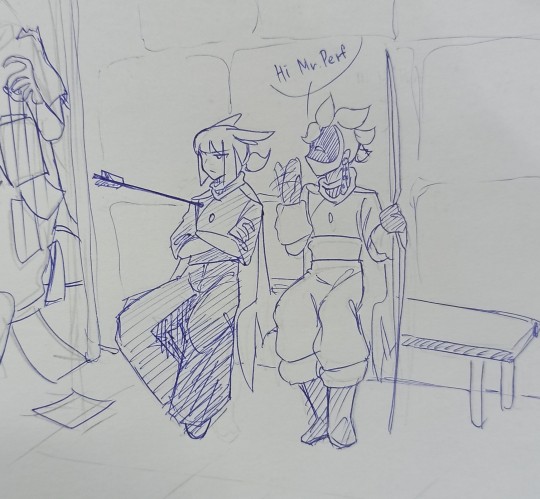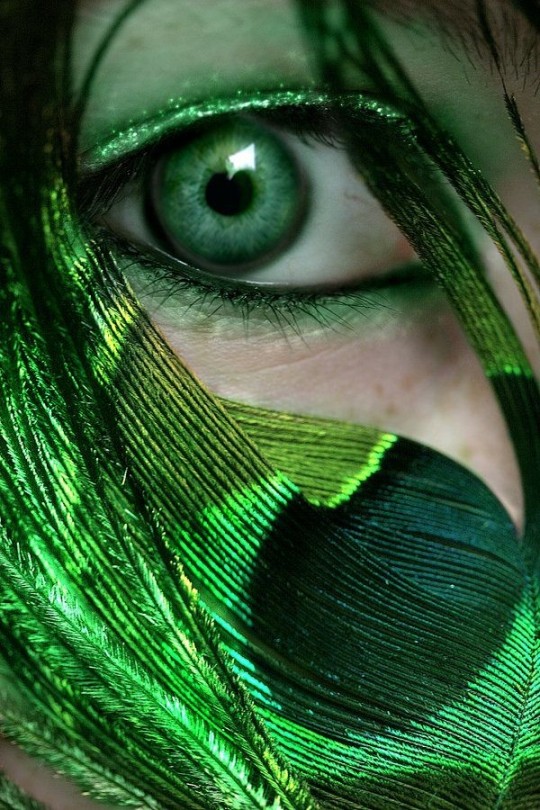#feri
Text


No words qwq
@dusty-stone - Feri's owner
#Feri#Nooty#performance guide#sky children of the light#thatskygame#sky colt#skykid#sketch art#doodle#sky cotl fanart#this is awkward#:')#skycotl memes
123 notes
·
View notes
Text

Kᴀᴛᴇ Vɪɢᴅɪs • Pᴜʀᴘʟᴇ Hʏᴀᴄɪɴᴛʜ
124 notes
·
View notes
Text

[90]
Colored by @saifey
24 notes
·
View notes
Text
Pagan Wedding Colors Cheat Sheet

In the last couple of years, there's been a move away from correspondences in the Tumblr pagan community. I mostly think that's a good thing. Correspondence lists tend to be oversimplifications and to only highlight a single trait of a given plant, crystal, color, or whatever -- and yes, you tend to lose a lot of nuance when you do that. I think, in general, encouraging people to engage with their spiritual tools and allies as complex, multi-faceted entities is a good thing.
HOWEVER, correspondence lists can be very useful as starting points for further research. A quick, simple summary of an item's use in a certain context can give readers an idea of whether that item is worth looking into further. It can also help limit research options to something more manageable for those of us that are easily prone to choice paralysis. (Hello, fellow neurodivergent pagans!)
With all of this in mind, here is my quick and dirty "cheat sheet" for pagan wedding color symbolism, correspondences, and spiritual associations. I hope this will help other pagan brides, grooms, and spouses-to-be as they design their wedding celebrations, and as always I encourage you to use this post as a jumping off point for further research and reflection.
A Quick Note About Meaning
Not everything you include in your wedding needs to have a spiritual meaning attached to it. You can include things purely because you like them or think they're cool. If you want to get married in a black dress because you think black wedding dresses look badass, that's all the reason you need -- you don't have to know the associations of the color black in different pagan traditions. Your wedding choices can be exactly as deep and symbolic as you want them to be.
Color Symbolism
White is the traditional color for weddings in Western culture. And if that tradition is meaningful to you, by all means, include white in your wedding clothes and decorations! Most pagan faiths include some form of ancestor worship, and for many of us, the last several generations of our ancestors have had white weddings. Getting married in the same color dress (or tux, or other outfit) as your parents and grandparents can be very meaningful on its own. If you choose to get married in white to honor your ancestors and your culture, that's a perfectly wonderful option.
White as "the wedding color" goes back at least to the Roman Republic. Historian Karen K. Hersch says that Roman grooms wore all white and that while brides wore a white tunic. We don't know exactly what symbolism the color white had to Romans, but it may have represented purity or new beginnings.
Outside of Rome, white was actually uncommon as a color for wedding clothes until very recently. In medieval Europe, brides dressed in a variety of colors chosen based on personal preference. White didn't become popular until 1840, when Queen Victoria married Prince Albert in a white dress trimmed with lots of white lace. This wasn't actually meant as a fashion statement -- supposedly, the queen chose the dress she did to help out the English lace industry, which was struggling at the time. Fashionable brides rushed to copy the royal couple, and the rest is history. Associations with virginity didn't come until after white wedding dresses became popular.
If you want to choose your wedding colors based on modern color associations, white is associated with purity, cleansing, new beginnings, healing, and spiritual growth. In some traditions, it is also associated with the full moon. In Wicca, white is associated with the Goddess.
Black is believed by many modern Westerners to be bad luck at weddings, mainly because it's the main color we associate with death and funerals. It's considered rude to wear black to someone else's wedding. Even so, black wedding dresses have become a trend in the last few years as a bold, slightly edgy fashion statement.
Black wedding clothes date back to the Zhou Dynasty in China, where couples wore black to avoid violating clothing taboos related to gender and social class. In 17th century Spain, Catholic women got married in black silk dresses as a sign that they were committed to their husbands until death. Goth couples have been getting married in black for decades as a way of rejecting traditional values.
Black's modern associations are protection, truth, night, outer space, banishing, and transition. Wiccan author Scott Cuningham says that black symbolizes "the ultimate source of divine energy," and in some Feri traditions it is associated with Star Goddess.
Red is the color I chose to get married in, and it's one of the most popular wedding colors across the globe. Red is the color of choice for wedding clothing in India and China. In China, red is the luckiest color and wearing it brings good fortune, especially when beginning something new.
Red may also have been one of the colors of choice for Roman weddings. Scholars are not sure what color the flammeum (bridal veil) was, but in at least one source it is described as sanguineum (blood red). Statius describes Juno, the goddess of women and marriage, giving a couple "sacred bonds" that were colored white and red. To Romans, red may have symbolized future generations, the mixing of "bloodlines," and/or the hearth of the couple's new home.
Red also played a role in some Ancient Hellenic (Greek) weddings. Athenian brides wore veils of yellow (see below) or red, which represented fire. Some sources describe the flame-colored veils scaring away evil spirits that might interfere with the couple's marriage.
While Norse culture didn't have a dedicated "wedding color," we know that red was a popular dye color for Norse women's clothes. Many Norse brides probably got married in red, and red would be a historically accurate choice for a modern Heathen wedding.
Red's modern associations are protection, the fire element, sex, romance, power, vitality, fertility, passion, courage, and good health. Scott Cunningham associates both red and orange with the God in his solar aspect.
Yellow may not be as popular with modern brides, but it has a long historic association with weddings. As previously mentioned, ancient Athenian brides wore a yellow or red veil on their wedding day, which represented fire and scared away evil spirits.
Yellow veils also played an important part in weddings in the Roman Republic. The flammeum, the bridal veil, was the single most important article of clothing in a Roman wedding -- in fact, the Roman word for weddings, nuptiae, is connected to the act of veiling. While some sources describe the flammeum as blood red (see above), there is actually even more evidence for orange-yellow veils. Pliny the Elder compared the color of a bride's veil to egg yolk. In cases where brides wore yellow veils, it was probably meant to protect them from evil spirits.
Yellow may also have been a popular color in pre-Christian Irish weddings. Although there doesn't seem to have been a standard "wedding color" in Ireland, yellow was associated with blessings, good fortune, and protection, which would have made it an obvious choice for weddings. We know that yellow was one of the most popular colors for clothing in medieval Ireland, with sources describing clothes as "saffron." Yellow clothing was so closely tied to Irish identity that it was actually banned under British occupation!
Yellow's modern associations are success, inspiration, communication, mental clarity, divination, the element of air, charm, confidence, joy, and harmony. Gold has similar associations to yellow.
Blue is a beautiful color for weddings, and used to be much more common. In medieval Europe, blue was one of the most popular colors for wedding dresses because of its association with the Virgin Mary. By wearing Mary's color at their weddings, brides emphasized their purity, virginity, and piety.
Blue's modern associations are healing, stillness, peace, the water element, psychic abilities, truth, patience, understanding, devotion, wisdom, and the ocean. Scott Cunningham associates blue with the Goddess in her watery aspect.
Purple may have been one of the colors of choice for Hellenic weddings. Achilles Tatius describes a bride wearing a purple dress in his romance Leucippe and Clitophon. In the Roman Republic, purple was associated with manhood, and white togas with a purple hem were a sign of a boy coming of age.
In medieval Europe, purple was a color reserved for royalty, and it was actually illegal for people who weren't royals to wear purple clothing.
Purple's modern associations are mystery, magic, divine power, spiritual awareness, sentimentality, wisdom, strength, and progress. Scott Cunningham associates purple with a deepening connection to the God and Goddess.
Silver is another color that may have been part of Hellenic weddings. In Hesiod's Theogony, Pandora is described wearing a silver dress at her wedding.
Silver's modern associations are refinement, wealth, the moon, nobility, and sophistication. In Wiccan and other neopagan communities, silver is associated with the Goddess in her lunar aspect.
Green is a popular wedding color for modern pagans, especially those who follow a nature-based path. It represents the lush fertility of the earth and is connected to fertility spirits like the Green Man.
It's important to note that green used to be considered an unlucky color for weddings, especially in Celtic cultures. This is because of the color's close connection to Fairy. Green was considered the Other Crowd's color, and wearing it could attract their attention in a negative way.
Green's modern associations are nature, plants, the earth element, money, wealth, prosperity, good luck, growth, rejuvenation, nurturing, and good health.
Pink may not have been very popular with ancient cultures (although some sources describe the Roman flammeum as a reddish-pink), but it is one of the colors most strongly associated with romantic love in modern popular culture. Pink is a soft, romantic, dreamy color, and is perfect for sweet, intimate weddings.
Pink is associated with romantic love, friendship, self love, compassion, playfulness, sweetness, emotional well-being, unity, honor, and spiritual healing.
Resources:
The Roman Wedding by Karen K. Hersch
"Bridal Attire in Ancient Greece and Rome" on Women In Antiquity
"Typical ancient Greek wedding day" on History Weddings
"The Ancient Egyptian Bride" by Ilene Springer
Where the Hawthorn Grows by Morgan Daimler
Sex and Marriage in Ancient Ireland by Patrick C. Powe
"The Léine" by Matthew Newsome
"What did Vikings wear, really? Attempting a historically accurate womens Viking costume" by SnapyDragon
Modern Handfasting by Liz Williams
Witchcraft for Everyone by Sam Wise
Wicca: A Guide for the Solitary Practitioner by Scott Cunningham
"What Does a Black Wedding Dress Mean?" by Andrea Papillon
#yes i know this gif is the hotd incest couple but its very hard to find non-christian wedding gifs okay#the great handfasting project#pagan wedding#handfasting#color correspondences#correspondences#heathenry#inclusive heathenry#religio romana#cultus deorum#roman polytheism#hellenic polytheism#hellenism#irish polytheism#irish paganism#celtic polytheism#celtic paganism#wicca#wiccan#feri#color magic#wedding magic#love magic#love spell#long post#my writing#history
55 notes
·
View notes
Text
feri got sent to gay baby jail for his gay baby crimes

20 notes
·
View notes
Text

Feri and Wasyl<33
4 notes
·
View notes
Text
The Andersons Do Not Get Enough Shit For Their Bullshit: My Thoughts on Feri.
First of all in case this post breaches containment, a little about myself. I'm Gef, I'm a thirty-something white cis disabled Canadian lesbian. I have a BA in Religion and Culture from Wilfrid Laurier University and an MLIS from the University of Western Ontario (I think it changed its name since I graduated). I also have minors in Medieval Studies and Women's Studies but they don't give you pieces of paper for those. My spiritual journey looks something like Catholic - New Ager - eclectic Wiccan-ish - Dianic-ish (the TERFy kind) - Heathen - Vanatru - now I kind of just read about witchy stuff, goddess-y stuff, and I collect divination decks. This isn't the first I've heard of Feri, but this is the first time I've sat down and read up on it.
I would just like to take a moment to recap what I've read so that everyone is on the same page:
Heart of the Initiate: Feri Lessons
Fifty Years in the Feri Tradition
Evolutionary Witchcraft by T. Thorn Coyle
The Wikipedia pages for Feri and Victor Anderson
A couple articles on feritradition.com
I read The Spiral Dance ages ago and am currently rereading it but am not including it here.
I think that's all the basics covered, let's get to the meat of the discussion.
I'll start with what I found appealing about the tradition. Both the founders and initiates stress that Feri is an ecstatic tradition, not a "fertility religion" like Wicca. It is a tradition of the poet, of being in your body, of dancing with the gods. It's also pretty explicitly queer (but see below): God Herself catches Her own reflection in a mirror and makes love to Herself, creating all the other deities in the pantheon. Coyle in particular talks about the Gods and Guardians (think like the Guardians of the Watchtowers in Wicca) as being genderfluid. The tradition practices ritual possession where the genders of the deity and their host don't matter.
Regarding Evolutionary Witchcraft specifically. I found the exercises (which involve a lot of breathing and awareness) to be useful and I think they would be of use to any witch. I also love the way she speaks of the Earth element in particular, as I think a lot of Pagan books are like "Oh Earth is money and other boring mundane stuff" whereas she talks about Earth as money but also as safety, security, the place where you incubate things (like in a cave), and the tomb. Despite my issues, I think I would recommend it.
Having said all that, I feel like the Andersons do not get enough shit for their bullshit.
Based on his students accounts, Victor sounds like a bit of an asshole at best. He's described as "a taskmaster" and that "One could ask for clarification, but to even hint that one disagreed with him, or worse yet, to contradict him, would result in an immediate and permanent order to leave," which is maybe just me but I wouldn't want to study under a teacher who didn't allow for disagreements or questioning, that's a cult leader thing. His wife Cora comes across as a yes (wo)man "my husband is a great shaman and an expert on x, y, and z." Now honestly I feel like people should hype up their spouses, but this is a constant throughout their writings.
Honestly though, I didn't get the chance to know them personally. Maybe they were awesome people irl. I'm just going off what I've read, but even if they were both very nice people, I still have some major issues.
One of these issues are the Andersons' claims about their own religion. Feri dates back to the Stone Age (uh huh), Feri's origins are in Africa (sure). Victor claimed to be a kahuna and an expert on Vodou. Apparently, once Victor read something he thought was true, he decided it had always been true. I should note here that near as I can tell, his source for info on Hawaiian religion is that Huna book by that white guy writing about what he thought Native Hawaiians believed. I've heard people justify this by being like "oh well Victor was being poetic and not literal" but that doesn't change the fact that it's straight up bullshit. Poetic lies are still lies. So yeah you'll often hear "Feri draws from a variety of traditions" but I'd say in some cases it's less "influenced by" and more "appropriated from" (I do feel the need to mention that some initiates have moved away from, say, using Hawaiian terms for their concepts).
I mentioned the deities in passing but Feri has its own pantheon. Most of the deity names are Welsh and many deities go by several names or are seen as similar to named deities in many cultures (the Blue God, for instance, being compared to Krishna) and they also have secret names that only initiates know. One important aspect of the Blue God is the Peacock God, at first I was going to include him under the section on appropriation, but Feri practitioners have apparently been in contact with actual Yazidis who have given their blessing re: Feri worship of Melek Taus but I'd prefer to hear it directly from the Yazidi that they are cool with it.
Okay so way back at the beginning I mentioned Feri was very queer but I really should amend that to say "unless you're asexual" because oh boy sex is inescapable in this tradition. It's implied that sexual activity between initiator and initiate is a thing that happens but there's an alternative ritual called the Intentions of the Heart where you do (non-sexual) ritual things and then "your first act of sexual intercourse" post-ritual is your initiation. The foundation of Feri practice is the Iron pentacle, where "sex" is at the top. There is also the Pearl pentacle, seen as the "higher energy" version of Iron, where sex becomes love. In Evolutionary Witchcraft, Coyle makes a few unfortunate statements about the relationship of sex to love that imply you cannot have love without sex. I don't really see a lot of room for asexual practitioners in this system, which is a shame because I know of some wonderful queer initiates of this tradition. I would be interested in an initiate's view on this because I know queer practitioners have talked about using an amethyst pentacle, for instance. I should note however, that Coyle states that not everyone needs or wants initiation as it involves marriage to the deities and responsibilities to the tradition, but as I said the tools and techniques she talks about are fine to use.
I did actually like Evolutionary Witchcraft so even if the tradition is not for me, I do what I usually do: take the bits I find useful and leave the rest.
15 notes
·
View notes
Text
regeneration.

(re-uploaded from my twitter, i felt proud of it so i posted it here)
#feriAmberwoods#Amberwoods#feridoodles6#feri#feri the rabbit#oc#digital art#digital horror#horror#surrealism#artists on tumblr#digital artist#regeneration#the body heals when it is scarred once more
6 notes
·
View notes
Text
@king-feri @crotch-goblins-of-the-light

Some Blob: IM GOING TO KIDNAP YOU
Bean: Let me ask Feri
Some Blob: wut?
Bean: Feri! Can I be kidnapped?
Feri appearing out of nowhere: ABSOLUTELY NOT!
15 notes
·
View notes
Text

Everything is an altar
#witchcraft#witchlife#animism#animist#animistwitchcraft#anderson feri tradition#feri#faery tradition#altars#pagan#pagan altar
12 notes
·
View notes
Text



Credit idea by @dusty-stone (Feri's owner)
#Feri#Nooty#sky children of the light#thatskygame#sky colt#skykid#sketch art#doodle#sky cotl fanart#skycotl memes
122 notes
·
View notes
Text

La ViaSimple 7507 (DeviantArt) • Peacock
#peacock#dian y glas#feri#feri tradition#blue god#the blue god#green#peacock feathers#eyes#eye#green eyes
10 notes
·
View notes
Photo

Trying to draw with a broken tablet is like cutting steak with a spoon
#oc#spasausd#feri#The replacement parts are in the mail but I'm sick of sitting around doing nothing
15 notes
·
View notes
Photo





More of Van’s sweet tooth madness
PART 1 PART 2 PART 3
#Kuro no Kiseki#Falcom#Trails Series#van arkride#van#agnes#agnes claudel#feri#aaron wei#aaron#sweets#dessert#cake
9 notes
·
View notes
Text
Tipped over the edge.
Blurb: Rhys Father has had enough of Rhys looking into the frivolous ideas and items of the human world.
Characters: Rhys, Feri, Rhys Father (yet to be named)
TW: Minor Blood and Knife Mentions
-
The blade tickled as it ran down along his spine. The coldness of the metal making his hair stand and his insides shudder. The firm grip on the horns from his head stopped him from being able to pull away with any ease, and one movement would surely lead to the knife in his back. On his knees, his hands pinned behind him, one of them currently crushed under the weight of the demon. He could feel the dull ache emanating up his wrist and throughout his arm.
“I told you to stop looking into the human realm.” The voice hissed, and the blade pressed slightly into his skin, just barely breaking the surface.
Rhys face was flushed with anger, and he tried once more to twist,
“Do you want this blade in your back? Would you really choose to die here over those books? I didn’t think I had raised a coward.”
The blade pressed in, this time he could feel the small indent, a droplet of blood dribbling down the small of his back.
“Can’t even speak to your old man?”
“I have nothing to say to you”
The moment the venom left his tongue it was replaced by the burn of the blade and the ache of his thighs as he was shoved downward, his horns being pressed back, causing him to arch onto the blade of his own accord. He could practically hear the bastard smiling.
The pressure continued, and blood began to drip from his back onto the floor.
He could feel as the blade drew deeper, trying to pull up, arch away, but he was stuck.
Suddenly a voice perked from the chamber doors, younger, ignorant.
“Father!” The voice bellowed, joy laced in the words.
Everything froze. The man beside him stiffened, and swallowed a low groan.
He felt warm breath brush his ear as his father leant in, his voice a low threatening tone.
“If you dare be found interacting with anything from that realm, or any other realm that is not our own, you will be disowned and dismembered by my hands.”
With that he was released and kicked over, his body sliding into the shadows. The swallowing him behind the chair where he could not be spotted. Barely trying to catch his breath, he caught a final glance at his fathers glare, before the man dipped into the stones, his horns being the last sight vanishing through the floor.
“Father?” The voice questioned, having gone unanswered for long enough.
Rhys could just barely see his brother, peering around on the balls of his feet. He had blood covering his arms, splatters of it in his hair and on his cheek. It made his stomach flip.
The man in question finally opened the door beside the chair with enough force to symbolize a king's entrance.
His arms were open in a warm greeting, something Rhys had never the true pleasure of receiving. “Feris! My boy, just look at you! A true warrior. Coated in victory.” he boasted as he slowly lazed back into his throne. He swore his father glanced back at him as he did, just to see if he was still there.
“How was the practice? How many did you wound?”
Rhys watched, crumpled, as his brother began to detail the training and the fights. He could not say when, perhaps he had zoned out a little as the adrenaline had started to waver. But at some point, he could not stomach any more, and took what little energy he had left, and sunk into the floor, back to his own chamber.
The cold stones were welcome under him, and he finally let out a sigh. A small sliver of light casting across his legs as he laid there, unwilling to move to his comforts. His back burning, head aching, and heart empty.
#original character#original writing#Angst#Ocs#Knife mention#blood mention#Demons#family abuse#daddy issues#I love you Rhys#Feri#Rhys#Written by me :D
3 notes
·
View notes
Text

Feri with cat
My favorite out of my 31120213769.. other characters-
2 notes
·
View notes